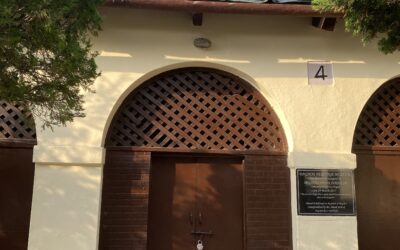Bala Ram, from Madhya Pradesh, working as a factory labourer in Bhilwara, shares his story while the milk is getting boiled, waiting to start the main plot only after chai is served; because no story starts without a cup of chai.
The story narrated by Bala Ram, has an interplay between personal tragedy, cultural beliefs, and the subsequent economic burdens. His story reflects not only an individuals misfortune but the larger narrative of our society and its bindings, ultimately shaping the experiences of many.
“Accepting the chai offered to me by Bala Ram, i settled to listen to his story, from an outsider’s vantage point”
Loss And Its Reasoning
Bala Ram’s first love marriage ended in separation because his then-partner was unable to give birth to children. In this society, such inability to produce a progeny, translates into inability to fulfill familial duties. Hence, to pursue such frameworks of the society, Bala Ram remarried, an arranged one this time, to fulfil the expectations of the society.
Bala Ram’s wife became pregnant, soon after his remarriage. However, her pregnancy was repeatedly marked by tragedy. The newborn would survive only for a few hours. He had visited multiple hospitals, both in the private and the government sector, an attempt to save the babies, but to no solution. This pattern continued with two subsequent pregnancies. To tackle these losses, Bala Ram attributed the misfortune of new born death with his wife’s ill health, infact connecting it to supernatural presence inside his wife.
“Kuch mahilao ko dil mein lag jaata hai na, koi aisa lag gaya tha mere patni ko, (some women have a burden upon their hearts, a similar thing happened with my wife, even before marriage)” he had claimed, basically implying that she had been “possessed”
A state he said existed even before their marriage, but was not informed to him by his in-laws. The reason for this was one would think to hush down the issue to get the daughter married. But in fact, he had said “uska toh shaadi ho hi nahi raha tha kisise, kismat main likha tha mere se hona tha (her other marriage proposals were not going through, it was written in my destiny, to end up with her).” The interplay of destiny and patriarchal narrative, gives out a reasoning of all the losses happening here, for both Bala Ram and his wife.
A Threat From The “Inside”
When asked about if he had experienced this being on the ‘inside’ that has possessed his wife having a bodily reaction out of her, he recalled back to an episode. Often getting unconsciousness, this one time, the voice inside her threatened, “Ya toh iske sharir ko maar dungi, ya toh iske aulaad nahi hone dungi (either I will kill the body of the woman i have possessed, or I will not let her have a child)”. This gave an understanding of the unfortunate deaths of the wife, nothing a jhaad-phoonk (exorcism) baba cannot solve.
Bala Ram then started frequent visits temples, consulted local babas, and underwent multiple jhaar phoonk rituals, all in a bid to get rid of the curse that had befallen his wife.
Each ritual, was costing him between ₹200 and ₹300 per visit, along with additional expenditures on specific jewellery, gems, taabiz (amulets), and travel to holy sites, which would typically amount to an average of ₹5,000. Over time, these repeated expenses, together with his existing financial expectations for his family, forced Bala Ram into an unending cycle of informal loans. The start for this loan cycle perpetuated him into cycles of loans for other requirements of need, such as ration, transport, and other immediate requirements.
Connecting The Dots?
The interpretation Bala Ram provided his wife’s health issues as evidence of possession becomes a reflection of a larger cultural tendency to pathologize female bodies and attribute its failures in reproduction to supernatural causes. Check ups for the female body, in this case, the wife, was not kept in track. A natural understanding was imposed to the loss of babies with superstition.
However, what the formal healthcare cant seem to pin point if she had been checked out, could this word be still written in such confidence – ‘superstition’. What becomes a marker of belief, or culture, or actually scientific, could there perhaps be a thread running through all, the thread of perspective? So, does the answer that Bala Ram made, connecting the ill health to the societal superstition make sense in his perspective? So the dots ultimately all connect, through this understanding then?
Moreover, if coming to the emotional recognition of this situation, Bala Ram’s recourse to supernatural explanations can be seen as an attempt to regain control of the situation where rational explanations offer little solace. Superstition, in this context, becomes a coping mechanism, a way to blame and seek consolation through culturally approved rituals.
The Financial Burden
However, the financial burden that forms out of these ritualistic practices is significant in these cases. Bala Ram relied on informal loans to finance his spiritual attempts to eradicate a misfortune, showcasing how economic vulnerability and cultural aspects can conspire together to trap individuals in cycles of debt. Often, these individuals, with a spiritual heavy well being, run through hard earned income fast due to misfortunes that arise in aspects of their life. The low- income crowd, the carrier of the spiritual undertaking given their low access to other health facilities, are also the ones who get exploited the most.
This often makes them the easy target for giving informal loans, with higher percentages, as they cannot even deny the percentages due to their urgent requirements. This cycle is a manifestation of structural inequities where the economically marginalised as Baba Ram are often exploited by quack remedies and further perpetuating their economical struggles.




0 Comments